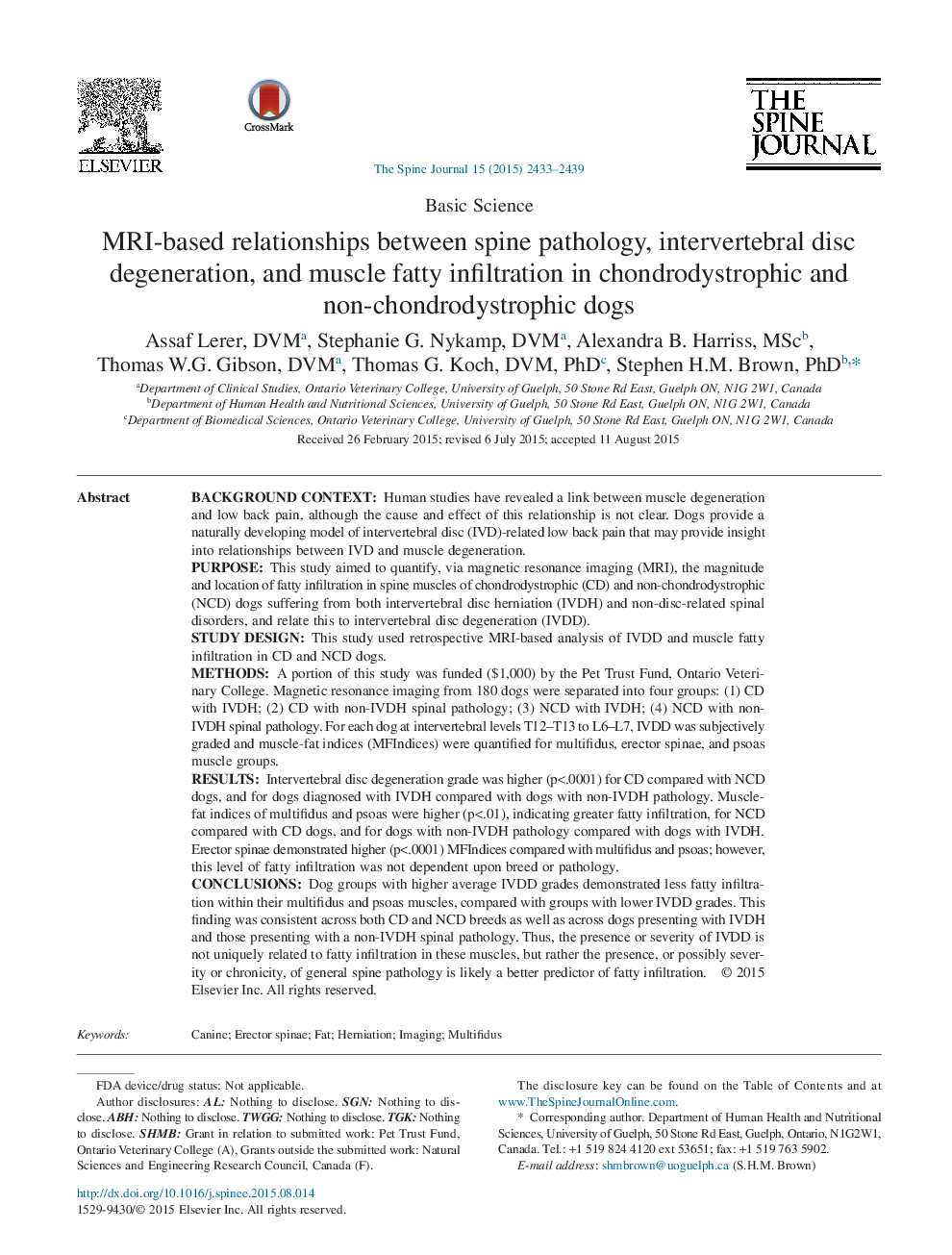| کد مقاله | کد نشریه | سال انتشار | مقاله انگلیسی | نسخه تمام متن |
|---|---|---|---|---|
| 6211811 | 1268559 | 2015 | 7 صفحه PDF | دانلود رایگان |

Background ContextHuman studies have revealed a link between muscle degeneration and low back pain, although the cause and effect of this relationship is not clear. Dogs provide a naturally developing model of intervertebral disc (IVD)-related low back pain that may provide insight into relationships between IVD and muscle degeneration.PurposeThis study aimed to quantify, via magnetic resonance imaging (MRI), the magnitude and location of fatty infiltration in spine muscles of chondrodystrophic (CD) and non-chondrodystrophic (NCD) dogs suffering from both intervertebral disc herniation (IVDH) and non-disc-related spinal disorders, and relate this to intervertebral disc degeneration (IVDD).Study DesignThis study used retrospective MRI-based analysis of IVDD and muscle fatty infiltration in CD and NCD dogs.MethodsA portion of this study was funded ($1,000) by the Pet Trust Fund, Ontario Veterinary College. Magnetic resonance imaging from 180 dogs were separated into four groups: (1) CD with IVDH; (2) CD with non-IVDH spinal pathology; (3) NCD with IVDH; (4) NCD with non-IVDH spinal pathology. For each dog at intervertebral levels T12-T13 to L6-L7, IVDD was subjectively graded and muscle-fat indices (MFIndices) were quantified for multifidus, erector spinae, and psoas muscle groups.ResultsIntervertebral disc degeneration grade was higher (p<.0001) for CD compared with NCD dogs, and for dogs diagnosed with IVDH compared with dogs with non-IVDH pathology. Muscle-fat indices of multifidus and psoas were higher (p<.01), indicating greater fatty infiltration, for NCD compared with CD dogs, and for dogs with non-IVDH pathology compared with dogs with IVDH. Erector spinae demonstrated higher (p<.0001) MFIndices compared with multifidus and psoas; however, this level of fatty infiltration was not dependent upon breed or pathology.ConclusionsDog groups with higher average IVDD grades demonstrated less fatty infiltration within their multifidus and psoas muscles, compared with groups with lower IVDD grades. This finding was consistent across both CD and NCD breeds as well as across dogs presenting with IVDH and those presenting with a non-IVDH spinal pathology. Thus, the presence or severity of IVDD is not uniquely related to fatty infiltration in these muscles, but rather the presence, or possibly severity or chronicity, of general spine pathology is likely a better predictor of fatty infiltration.
Journal: The Spine Journal - Volume 15, Issue 11, 1 November 2015, Pages 2433-2439